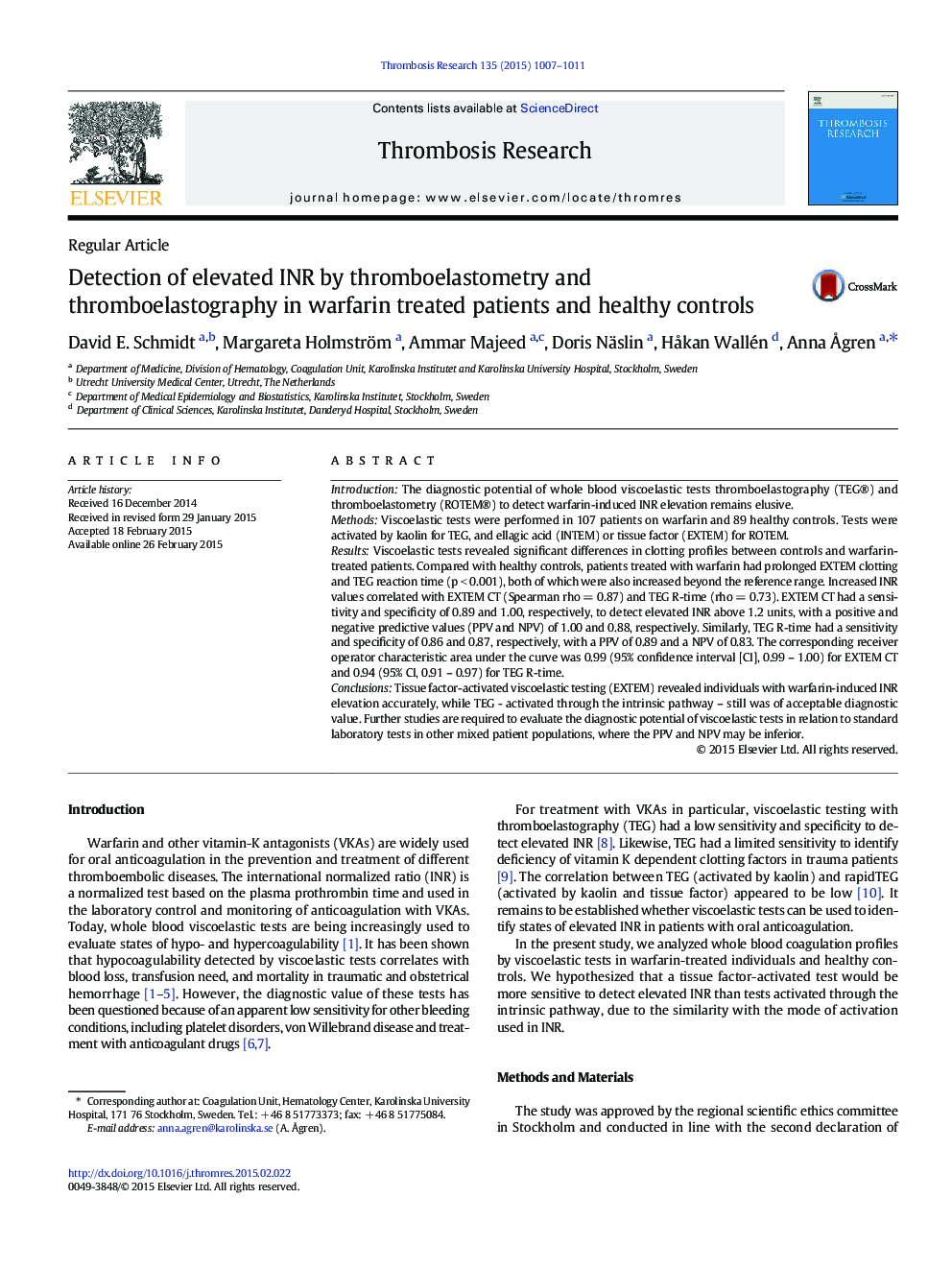| Article ID | Journal | Published Year | Pages | File Type |
|---|---|---|---|---|
| 6001622 | Thrombosis Research | 2015 | 5 Pages |
â¢Warfarin-treated patients had prolonged EXTEM clotting time and TEG reaction timeâ¢EXTEM CT had the highest positive and negative predictive values to detect INR > 1.2â¢EXTEM CT had a very high ROC area under the curveâ¢TEG R-time had a good ROC curve, but was inferior to EXTEM CTâ¢ROTEM/TEG allowed sensitive and specific differentiation of warfarin-treated patients
IntroductionThe diagnostic potential of whole blood viscoelastic tests thromboelastography (TEG®) and thromboelastometry (ROTEM®) to detect warfarin-induced INR elevation remains elusive.MethodsViscoelastic tests were performed in 107 patients on warfarin and 89 healthy controls. Tests were activated by kaolin for TEG, and ellagic acid (INTEM) or tissue factor (EXTEM) for ROTEM.ResultsViscoelastic tests revealed significant differences in clotting profiles between controls and warfarin-treated patients. Compared with healthy controls, patients treated with warfarin had prolonged EXTEM clotting and TEG reaction time (p < 0.001), both of which were also increased beyond the reference range. Increased INR values correlated with EXTEM CT (Spearman rho = 0.87) and TEG R-time (rho = 0.73). EXTEM CT had a sensitivity and specificity of 0.89 and 1.00, respectively, to detect elevated INR above 1.2 units, with a positive and negative predictive values (PPV and NPV) of 1.00 and 0.88, respectively. Similarly, TEG R-time had a sensitivity and specificity of 0.86 and 0.87, respectively, with a PPV of 0.89 and a NPV of 0.83. The corresponding receiver operator characteristic area under the curve was 0.99 (95% confidence interval [CI], 0.99 - 1.00) for EXTEM CT and 0.94 (95% CI, 0.91 - 0.97) for TEG R-time.ConclusionsTissue factor-activated viscoelastic testing (EXTEM) revealed individuals with warfarin-induced INR elevation accurately, while TEG - activated through the intrinsic pathway - still was of acceptable diagnostic value. Further studies are required to evaluate the diagnostic potential of viscoelastic tests in relation to standard laboratory tests in other mixed patient populations, where the PPV and NPV may be inferior.
